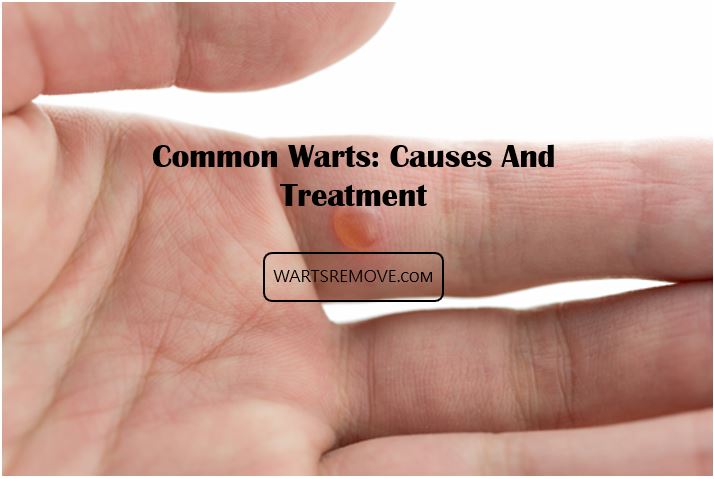Common warts are tiny, grainy skin growths that occur often on your hands or fingers and are one of the eight types of warts. They are usually rough to touch, they also feature a certain pattern of tiny black dots called seeds. Those seeds are small, clotted blood vessels. Common warts are usually transmitted by touch and are caused by a virus.
Young adults, children, and individuals who have a weakened immune system are likely to get common warts. After a certain period, common warts usually disappear on their own, but a lot of people choose to remove them because they find them embarrassing or bothersome.



Symptoms:
Common warts usually occur on your hands or fingers and symptoms may include:
- White, pink, tan or flesh colored.
- Grainy bumps which are small and fleshy.
- Small sprinkled black pinpoints, with clotted blood vessels
- Rough texture.
Causes of Common Warts
Common warts are usually caused by an infection with the Human PapillomaVirus (HPV). There are more than 100 types of human papillomavirus, but only a few cause warts on your fingers and hands. Other types of human papillomavirus are more likely to cause warts on your skin, feet, and other areas of your mucous membranes. Most types of human papillomavirus usually cause relatively harmless conditions such as common warts.
Common warts are transmitted from skin-to-skin contact with individuals who have warts. If you have the infection, you can spread the virus to other places in your own body. Also, you can get the wart virus indirectly by coming in contact with something that another person’s wart touched, such as a piece of exercise equipment or a towel. Common warts can be avoided by taking some general precautions. The common wart virus usually spreads through breaks in your skin, like scrapes or hangnails.
SOME MORE INFO: Periungual Warts: Prevention And Treatment | Filiform Warts: Symptoms And Treatments
Treatment of Common Warts:
Common warts found on the skin are usually harmless and can disappear without even treating them. If you have genital warts, you should consult a doctor for further advice. In most individuals, warts may recur after treatment, and multiple types of treatment may be necessary. Treatments may include:
Cantharidin
This medication is an extract of a blister beetle and is applied to the infected skin. It usually forms a blister around the wart on the skin. After applying cantharidin, the area is covered to avoid contamination. The blister removes or lifts the wart off the skin so the doctor can be able to remove the dead portion of the wart.
SOME MORE INFO: Mosaic Warts: Causes and Symptoms | Seborrheic Warts: Causes and Symptoms
Wartrol
Wartrol is a very effective wart remover that you can use to treat common warts. Wartrol works like a vaccine, and once applied to the affected area, it enters the bloodstream and produces antibodies that help to get rid of warts. Wartrol also prevents the future growth of warts.
Laser Surgery
This technique uses a laser to burn and destroy the wart tissue. It is not recommended for all cases, and treating this option as a last resort is highly advisable.
SOME MORE INFO: Oral Warts: Things You MUST Know | Plantar Warts: Causes, Symptoms, and Cure
Freezing
Here, a doctor will use liquid nitrogen to freeze the common wart. After freezing, a blister forms around the wart, and later, the dead wart tissue falls off within 7 days.
Minor Surgery
When it is impossible to remove warts through other therapies, surgery can be used to cut away the wart tissue. The base of the wart tissue will be destroyed using an electric needle or deep freezing.
Other medications include Bleomycin. Bleomycin injection usually kills the virus in the wart tissue. Aldara, an immunotherapy drug that comes in the form of a cream, can also be used. Aldara is usually stated for genital warts specifically.
Common warts are not dangerous. If they are bothersome or seem to persist, seek medical attention. Inform your doctor if you have allergic reactions to certain chemicals.
SOME MORE INFO: Genital Warts and How to Treat Them? | Flat Warts: Causes And Treatment
